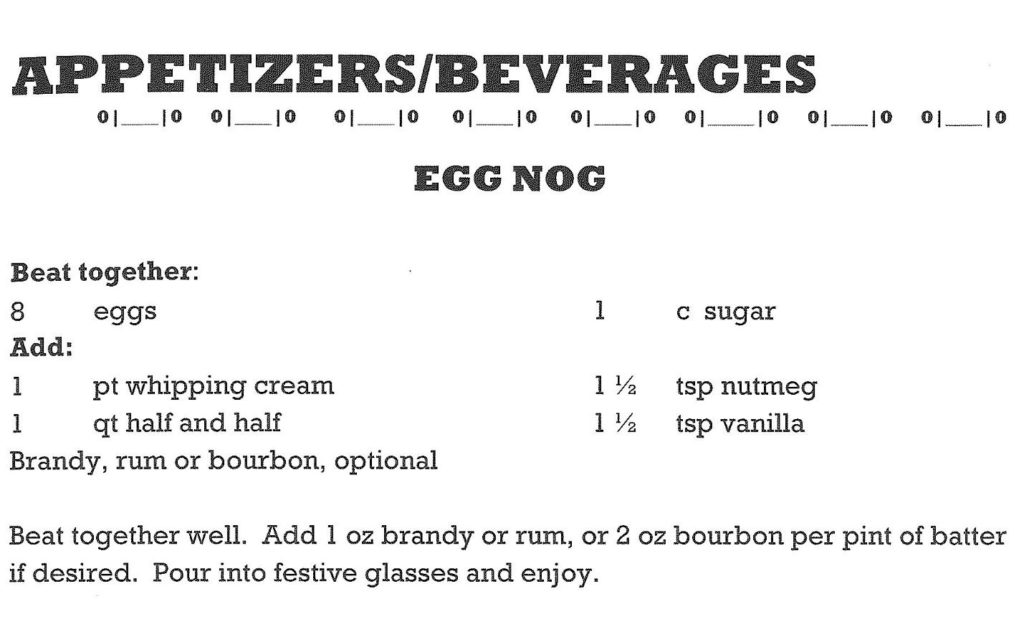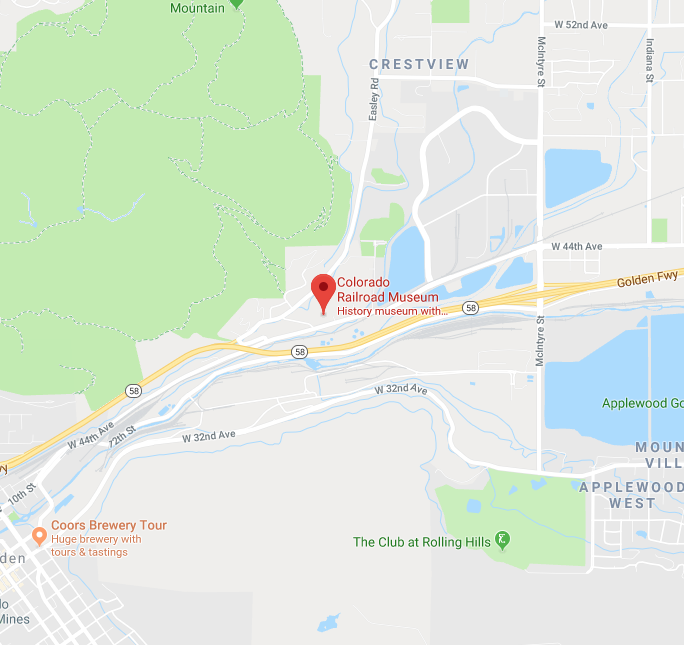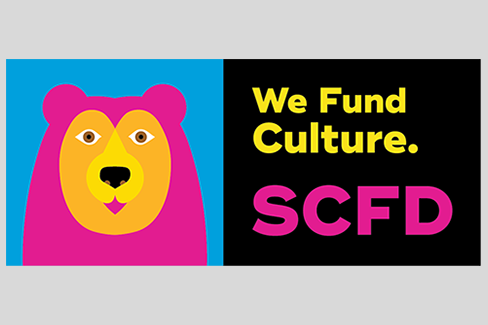For this month’s posting, we are celebrating the holidays with an eggnog recipe from our 50th anniversary cookbook, Gallopin’ Geese & Steamin’ Engines, 2009.
Eggnog: do you love it or hate it? It seems to be one end of the spectrum or the other; rarely does it elicit a neutral response. The history of eggnog is quite interesting, and while Americans tend to drink it between Thanksgiving and New Year’s, this holiday beverage actually started out as a year-round drink for the elite, since eggs and milk were expensive to the average person.
Eggnog is also not a new drink, relatively speaking, as its earliest origins date back to Britain’s medieval period. According to the Oxford English Dictionary, eggnog started out as posset, which was, “a drink made of hot milk curdled with ale, wine, or the like, often sweetened and spiced”. It is believed that the eggs were added later by monks, and their alcohol of choice was either sherry or Madeira. Posset would be used to toast good health and prosperity. Later, around the late 1700s, eggnog gained popularity in the American colonies because many Americans had access to eggs and milk from their own farms. Sherry was harder to come by in America, so it was replaced with more widely available and less expensive whiskey, and later on, rum. Around that time was when eggnog became more of a holiday beverage.
Even George Washington supposedly served an eggnog-like drink that included a mixture of sherry, rum, and rye whiskey, which must have packed quite the punch! Non-alcoholic varieties really didn’t gain popularity until the onset of Pasteurization, which might be because the alcohol would have killed any bacteria in the earlier versions of the drink.
The name eggnog is a bit of a mystery, but the “nog” may come from the name “noggin” which was a wooden cup in which the drink would have been served. Whether it’s served in a noggin or a Bullwinkle glass (a la Chevy Chase’s “Christmas Vacation”), we hope you enjoy your eggnog and have a very warm and healthy holiday season!
Figure 1 Eggnog recipe from Gallopin’ Geese & Steamin’ Engines, Colorado Railroad Museum, 2009.
Figure 1 Burlington Christmas greeting from dining car, circa 1967. Colorado Railroad Museum collection.
The cookbook Gallopin’ Geese & Steamin’ Engines was published by the Colorado Railroad Museum in 2009. The title is still available online and currently on-sale for $12.95! Click here to order your own copy today!





